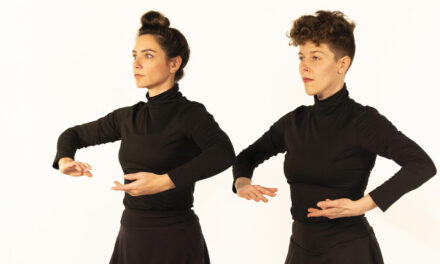The Bach Cantata Series, held in the very atmospheric Duke Chapel, is one of the most remarkable musical treasures of the Triangle. It combines outstanding soloists and HIP (Historically Informed Performance) musicians, all with free admission and programs with full texts, translations, scholarly notes, and biographies. The catch is the long reverberation time of the vast cathedral.
This all Bach concert was dedicated to Chapel of the Cross’ long-time organist Van Quinn.
Philip Cave directed the Duke Bach Ensemble soloists and the Mallarmé Chamber Players. The vocal soloists were soprano Kathleen Jasinskas, alto Tasmin Simmill. tenor Daniel Shirley, and bass David Newman. The instrumentalists were violinists David Wilson and Matvey Lapin, violist Suzanne Rousso, cellist Stephanie Vial, chamber organist Joseph Fala, and Robbie Link playing the fretted violone. The latter three often served as basso continuo for the recitatives. Prominent solo turns were taken by Baroque flutist Roseen Giles and oboist Sarah Huebsch Schilling.
Cave experimented with the location of the performers at this concert. They were placed at the top of the stairs to the chancel, between the choir stalls. Certainly sight lines were improved. Seasons ago the inaugural Bach Cantata Series concert took place entirely within the chancel, with listeners seated in the choir stalls. The huge audience, which overflowed into the nave, was unexpected. All the remaining concerts have taken place in the transept between the chancel and the nave.
The concert opened with Wo gehest du hin? (Where are you going?), S.156, composed for the fourth Sunday after Easter and premiered May 7, 1724, in Leipzig. It has six movements: aria for bass, aria for tenor, chorale for soprano, recitative for bass, aria for alto, and a concluding chorale for all four voices. The tone of Newman’s warm bass was paired with fine diction which lent authority to the questioning text. Tenor Shirley’s diction made his longer text easy to follow throughout, but reverberation clouded his delivery of Bach’s elaborations. The chapel acoustics clearly loved the sound of Shilling’s superb oboe featured in many of the movements. Female voices can carry well too. Jasinskas’ clarion soprano soared superbly in her chorale. Simmill ornamented with style as she sang with her even, well-supported voice. Her aria had a lively tempo and fine lines for the oboe. The beauty of the chorale finale belied its theme of the sudden change of life’s fortunes.
Next came the Andante, the first of three movements from Bach’s Trio Sonata No. 3 in D minor for organ, S.572, in modern reverse orchestration for flute, violin, and a continuo of cello and chamber organ. (The Adagio e dolce and lively Vivace were played after the second cantata.) Musical lines were delivered with great clarity, the new performance location aiding in projection. While Giles’ agile flute didn’t carry as well as the oboe, it was easily followed and balanced nicely with Wilson’s violin. Vial’s and Fala’s continuo was imaginative.
The morbidly titled cantata Ich steh mit einem Fuss im Grabe (I stand with one foot in the Grave), S.156, came next. It was composed for the third Sunday after Epiphany and was probably first performed on January 23, 1729. According to David Schulenberg, in an article in Oxford Bach, “its arias reveal Bach’s late style at its most subtle.” It consists of six movements: instrumental sinfonia, aria for tenor juxtaposed to the soprano’s chorale, an extensive recitative for bass, a lively aria for alto, and a second bass recitative, leading to the concluding four-part chorale.
The slow-paced sinfonia featured the expressive oboe of Schilling ably supported by the full string ensemble. The first vocal movement was splendid, with fine contrasts between the timbre and tempos of tenor Shirley and soprano Jasinskas’ steady refrain. Newman’s bass aria was delivered with expressive authority. Problems arose in an instrumental section of the lively alto aria; ensemble went off the tracks and Cave took two brief stops to restore ensemble. Simmill’s delivery of the text was superb. Newman’s recitative projected well and all four singers blended well in the concluding chorale.
The concluding cantata was Jesus nahm zu sich die Zwölfe (He gathered the twelve to himself), S.22. This was the first of two cantatas Bach used for his Thomaskantor application in Leipzig. It was performed on the Sunday before Lent February 7, 1723. It has five movements: a complex opening arioso for all four voices, an aria for alto, a recitative for bass, and a lilting tenor aria, leading to the buoyant final chorale. The opening is a Passion in miniature with the tenor as Evangelist, the bass as Jesus, and the remaining two singers as the disciples! Fine oboe support was much in evidence, and the choral fugue came off beautifully. Simmill’s clear phrasing of the alto aria paired gloriously with the warm oboe tone above the continuo. During Newman’s strong declaiming about Golgotha, a melody underlined the line “Zwar ein feste Burg,” hinting at the famous chorale. Tenor Shirley was heard to best effect in his dance-like aria, very nicely ornamented. The singers spun their lines in the concluding chorale above a strong walking bass and richly flavored by the oboe.
There may be no satisfactory acoustical solution for chamber-sized forces in Duke Chapel’s vast space. I recommend arriving in time for 4:00 pm Choral Evensong. Chose seating within 50 feet of the chancel. On this occasion I heard excerpts, Magnificat and Nunc Dimittis from the Service in E minor by Leo Sowerby. Adjust seating after the evensong for the Bach.











